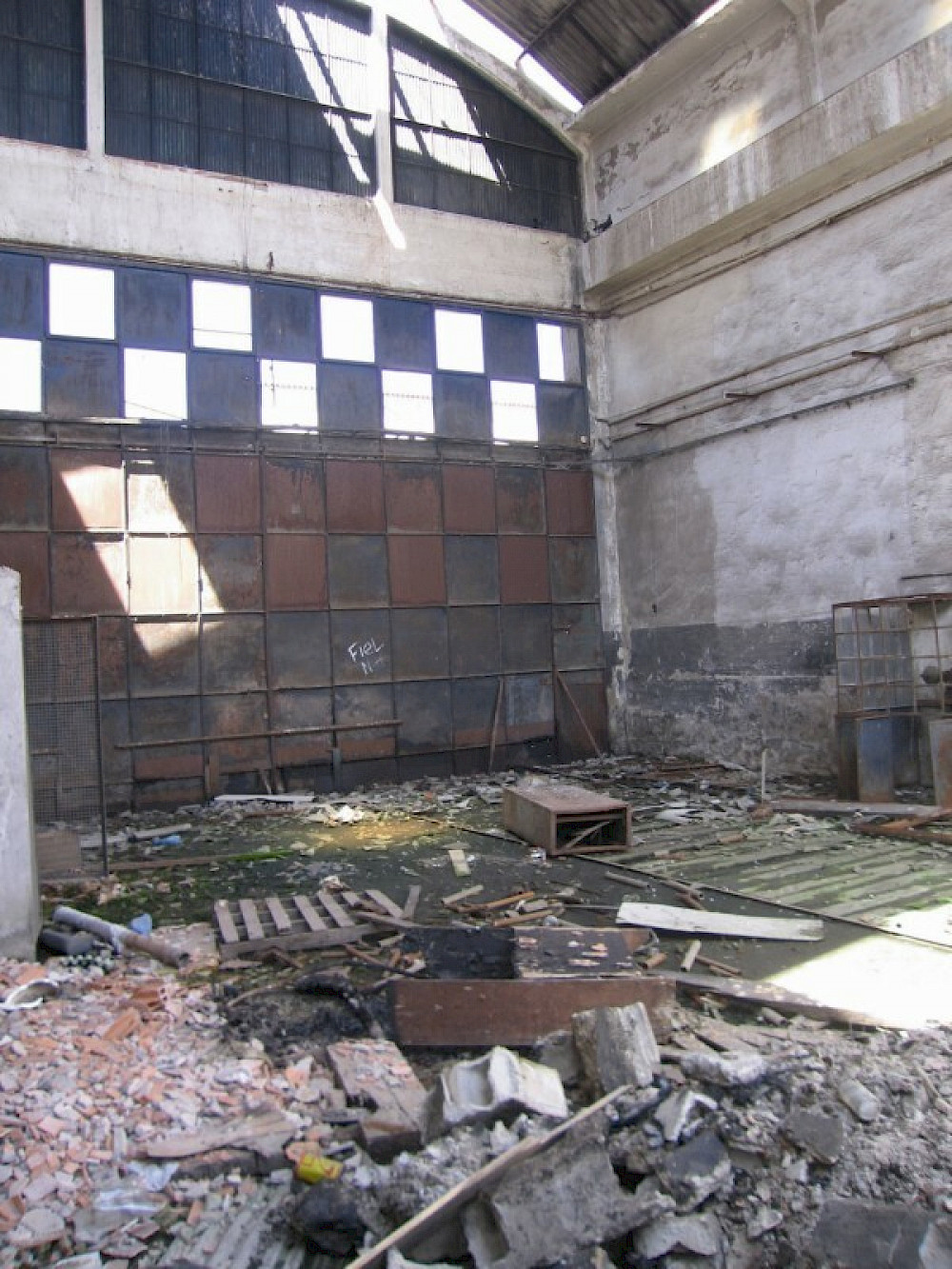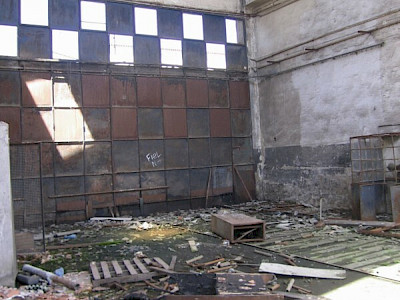27 — 29.05.2010
Lia Rodrigues is a key figure of contemporary dance in Brazil. The consistency and commitment with which she has developed her oeuvre since the late eighties have earned her wide recognition. In recent years, she has worked with inhabitants of Rio’s favelas, where she set up a centre for artistic training and creation. It is a place where the outside world of the favelas comes rushing in, so it is no coincidence that this is where Pororoca emerged. This production explores the notion of “community”. How can we establish a common ground, a shared space, harmony within chaos? The movements of the eleven dancers in this overwhelmingly physical performance emerged spontaneously, freely, sensually, but they are developed with near obsessive precision. Despite their individual differences, the dancers move collectively, as a single body in constant evolution, an organic mass which – subjected to opposite forces – fans out into the audience. “Pororoca” is an indigenous Tupi word. It describes the waves rushing in from the ocean into the Amazon delta, where they clash against the river’s current. Let yourself be carried away.
Lia Rodrigues
After training in classical ballet in São Paulo, Brazil-born Lia Rodrigues set up the Groupo Andança in 1977. She then moved to France from 1980 to 1982, joining the Maguy Marin dance company. When she returned to Brazil, she relocated to Rio de Janeiro and set up the Lia Rodrigues Companhia de Danças. Her choreographies have won numerous awards in Brazil and abroad. As well as directing and producing all her shows, Lia Rodrigues set up the annual Panorama Rioarte de Dança contemporary dance festival in 1992 and ran it until 2005. The French government has made her a Chevalier dans l’Ordre des Arts et des Lettres.
Lia Rodrigues is a choreographer and activist in body, mind and soul, so it is unsurprising that in her art form the body starts appearing like something of a manifesto. Her shows – somewhere between performance, visual art and dance – make familiarity with the body turn into something strange.
Stimulating reflection, offering spaces for encounters and debate, making other people aware of issues around contemporary art, supporting training and information: these are all activities that have been worked on by Lia Rodrigues’ company since it was set up in 1990.
For a few years now she has been conducting a novel experiment in which a professional contemporary dance company works alongside a social institution. In 2003, the company was invited to work with the CEASM, the Maré Centre for Action and Study, an association which for eight years has been providing social work and teaching activities within the community of Maré, a district right in the heart of Rio de Janeiro comprising 16 slums and home to around 132,000 people.
CEASM’s projects aim to overcome conditions of poverty and exclusion in the area. In Rio, the slums are not outside the city but right inside it in the city centre. This leads to the coexistence of very distinct social worlds, but despite this close coexistence, these worlds are extremely isolated from each other. The company therefore offers lessons and workshops to young people in Maré in the Casa de Cultura, a large warehouse donated to the CEASM that has been turned into an arts centre. Since then, three of these young people have become involved in the company’s activities then, following a period of training period, taken on to its permanent staff.
Expanding its activities in 2004, the company relocated its day-to-day activities to Maré, offering a pioneering artistic residence through the creation of a space for sharing, friendship and exchange of knowledge within the Casa de Cultura. A space there has been converted for professional dance, serving not just the company but the entire community as well, and since August 2007 a new partnership has been formed between the company, the REDES association and Rio de Janeiro’s ‘Slum Observatory’ to create a new work space in another part of Maré: the Nova Holanda slum. It was here in Nova Holanda that the company created, produced and performed Chantier Poétique in autumn 2008, as well as creating Pororoca. Its activities – combining artistic creation, production, public training and teaching – have now been extended to local slum dwellers.
Pororoca
Giving rise
It is found in Brazil where the Amazon River meets the salt waters of the Atlantic. Ahead of it – as far as the eye can see – the Amazon still has another two hundred or so kilometres to travel, at the end of which a vast space opens up, a shallow estuarial bed where it might have the opportunity of continuing serenely on its way, depositing its alluvium and the branches and tree trunks wrenched out upstream that it never tires of carrying, giving the impression of floating gardens. Then its milky waters come to invade this place which it has known for so long, caressing the group of islands located at its mouth, such as Marajo – the biggest of them – and Mexiana or Caviana which, dare one say it, is little more than a piece of debris from the continent, sketching out its delta there as brilliantly as the Nile, the Danube, the Mississippi or the Ganges.
But the pororoca is there, invisible most of the time except during the big summer tides. Suddenly the pororoca – another name for the Amazon’s tidal bore – forms out at sea as the tide rises. A series of waves spreads, pleating and intermittently breaking the surface of the water. Two defined areas appear: a flat area – the river – and a central area of turbulence where river and maritime currents clash and topple over in stages. Until a powerful breaker rises up, several metres high, and ascends the river at great speed. Tumultuous and unique, the pororoca is like a “stampede of ten thousand horses”, heard well before it is seen. Lia Rodrigues knows its roar when it is unleashed. What could be better than this for getting her Chantier poétique going again?
Lia Rodrigues continually questions day-to-day life in the Maré favela, one of Rio de Janeiro’s biggest slums. This is where she has based the process for her choreographic creations. Chantier poétique clears a territory there, developing, demolishing or restoring it, repairing what can be repaired and building the foundations for a burgeoning new work, hour after hour creating and improvising new conditions for survival in a Brazil torn apart by violence and social inequality, then beginning again without any certainty at all. Confront things. Build, answers Lia Rodrigues with determination, resist, share, dance. But how can they set up and build a territory together, how can they create it so that it exists all the time, how can the encounter be provoked, how can they be together in a space? How can they survive in the chaos and find a point of equilibrium amid the instability? Chantier poétique is taking shape. The gestures – like the words – are right, placed without lyricism, without embellishment, just as you would place a stone, one after the other, at the very spot where there are just ruins, rubble and wasteland.
After turning an old boathouse into a dance studio, Lia Rodrigues has now changed venue and choreographic space and moved to the Nova Holanda favela. The Centro de Artes de Maré has three aims of creating, training dancers and getting works of art shown. It opened its doors a year ago and project manager Lia Rodrigues is building a small community. Just as you would build a community of people who do not have a community, confronting rather than avoiding the difficulty – the improbability even – of being-in-common, a threshold where you would begin to understand what “being with” means and how to be it.
Orchestrating states of bodies and variations of intensities, Lia Rodrigues is writing Pororoca, a musical score for eleven body-instruments. Like the Amazonian tidal bore, Pororoca completely invades the territory created by Chantier Poétique, stirring up waters that have become almost tranquil because they have been organised, undermining, swelling up, dispersing and transporting the sediments of the bed of her river, bringing air to its unfurling roll, provoking and giving rise to a set of new encounters. Another small community is formed, adapts to changes, plunges into this experience and stirs up the silt of Chantier Poétique, improvising in this new space without tranquillity. The bodies swarm with notes, possibilities, come into contact with others. Confronted by the noises of the favela, each of them carrying in themselves their own story, listening to their emotions, coming across different affects, learning to rest in the instability, and building a singular score, entirely aimed at constructing a space of encounters to be invented. Remaining alive. Pororoca is created in silence from the bodies that are encountered, confronted with difference and similarity, pierced by the encounter with another body, naming the many ways of being together and simultaneously reconfiguring another territory, inscribed in a fluctuation of identities. Encountering Pororoca together, this is what it is all about for us as spectators.
Written by Cécile Faver for the Centre national de danse contemporaine – Angers,
November 2009
Creation
Lia Rodrigues
Performed & created in collaboration with
Amália Lima, Allyson Amaral, Ana Paula Kamozaki, Leonardo Nunes, Clarissa Rego, Carolina Campos, Thais Galliac, Volmir Cordeiro, Priscilla Maia, Calixto Neto, Lidia Larangeira
With participation
in the creation of
Jamil Cardoso, Gabriele Nascimento, Jeane de Lima, Luana Bezerra
Assistant choreography
Jamil Cardoso
Dramaturgy
Silvia Soter
Costumes
João Saldanha, Marcelo Braga
Light design
Nicolas Boudier
Management & international production
Thérèse Barbanel / Les Artscéniques
Production manager
Colette de Turville
Presentation
Kunstenfestivaldesarts, Kaaitheater
Production
Lia Rodrigues, Assumpçao Producoes Artisticas Ltda (Rio de Janeiro)
Coproduction
Kunstenfestivaldesarts, Centre National de Danse Contemporaine (Angers), Théâtre Le Quai (Angers), Théâtre Jean-Vilar (Vitry-sur-Seine), Théâtre de la Ville (Paris), Festival d’Automne (Paris)
Management
Les Artscéniques (Charenton)
Supported by
Petrobrás Cultural, REDES de Desenvolvimento da Maré (Rio de Janeiro), Espaço SESC (Rio de Janeiro), Prince Claus Fund for Culture and Development (Amsterdam)


